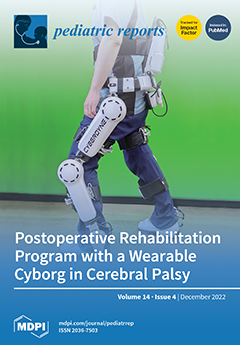Background: Hyperinsulinemic hypoglycemia (HH) is an important cause of persistent hypoglycemia in newborns and infants. Recently,
PMM2 (phosphomannomutase 2) mutation has been associated with HH, especially in conjunction with polycystic kidney disease (PKD).
PMM2 deficiency is one of the most common causes
[...] Read more.
Background: Hyperinsulinemic hypoglycemia (HH) is an important cause of persistent hypoglycemia in newborns and infants. Recently,
PMM2 (phosphomannomutase 2) mutation has been associated with HH, especially in conjunction with polycystic kidney disease (PKD).
PMM2 deficiency is one of the most common causes of congenital disorder of glycosylation (CDG). Renal involvement in PMM2-CDG manifests as cystic kidney disease, echogenic kidneys, nephrotic syndrome or mild proteinuria.
Case Summary: Here, we describe a pair of siblings with HH associated with autosomal recessive polycystic kidney disease (ARPKD) and
PMM2 mutation. Two siblings with ARPKD presented during infancy and early toddler years with severe hypoglycemia. Both had inappropriately elevated serum insulin, low β-hydroxybutyrate, a need for a high glucose infusion rate, positive glycemic response to glucagon, positive diazoxide response and
PMM2 mutation.
Conclusions: Although this combination of HH and PKD was recently described in patients of European descent who also had
PMM2 mutation, our report is unique given that these non-consanguineous siblings were not exclusively of European descent.
PMM2 mutation leading to abnormal glycosylation and causing cystic kidneys and the alteration of insulin secretion is the most likely pathogenesis of this clinical spectrum.
Full article






